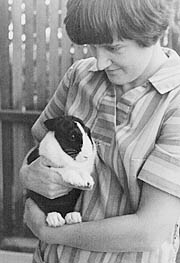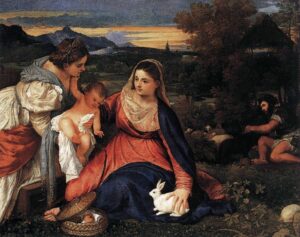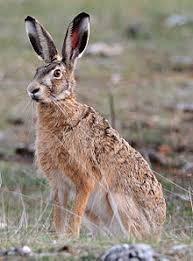Archive for the ‘pets’ Category
Sitting down with lions
In many cultures, humans see themselves as siblings to other living beings. In Aotearoa New Zealand, where I grew up, the Māori people recognize landforms such as mountains and rivers as their relatives. Even in Western Judeo-Christian societies, where humans are believed to have been make in God’s likeness and to have dominion over all creatures (Genesis 1:26), people with beloved domestic pets may discover that their relationship is closer to that of peers than of master and subject.
My own views, which come closer to those of scientific pantheism, had a formative moment one summer day in the early 1970s, when my friend Judi and I took our children to the Oakland Zoo. I tell about it in a letter to my parents:
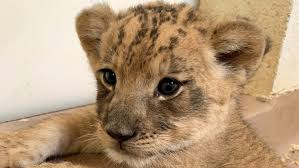
A lion cub recently born at the Denver Zoo. Image from the Denver Post.
The biggest thrill of the day, I got to cuddle a lion cub. Little 7 week-old roly-polies, they had been separated from their mother – I gather the father was threatening to harm them in the cramped quarters of the adult lions. We happened to be there at bottle time, and the keepers brought them out to a low platform in the children’s zoo. They obviously need lots of affection. I was sitting on the platform, and one of them just crawled into my lap, like a kitten or a puppy.
I will remember always the roughness of the cub’s fur under my hand, the warmth of his tiny body, the loudness of his purr, the overwhelming sense of awe that this wild creature trusted me. Here’s a poem about the incident:
The Lion Cub
In the dusty heat of the zoo
a lion roars.
I conjure a dream of Africa
an endless veldt
an alien majesty
concealed in yellow grass.
At the petting zoo
three lion cubs
explore a patch of dirt.
I sit.
One crawls into my lap
nuzzles my hand.
Under thick baby fur
muscles ripple, relax
curl up for a nap.
Wide-eyed, the children watch
and touch.
Distance evaporates.
We are earth family
connected deep in time
in mother love.
The Easter Bunny mystery
How could my husband and I be so mean as to deny our kids the Easter Bunny? I frowned as I reread the letter to my parents stashed in my old black filing cabinet.
12 April 1971
The kids are back at school today after their week of Easter vacation. The weather has been so beautiful and spring-like. This is something I couldn’t really understand until I came to the northern hemisphere—the significance of Easter as a spring festival—the death and rebirth of the god that is an important part of almost every religion there has ever been. Here a big thing at Easter is the Easter Bunny, who is alleged to bring baskets of candy eggs and goodies to kids on Sunday morning. This Tony and I just can’t go along with—somewhat to the kids’ disappointment, I think, though we do buy them a fancy Easter egg, and of course we have the fun and mess of dyeing hard-boiled eggs and hiding them in the garden for an egg hunt. I did allow Simon to share our pet rabbit at school one morning. Bun-Bun was less than enthusiastic about the whole project, but the children were ecstatic.
Part of the reason for our rejection of the Easter Bunny was that Tony and I grew up in New Zealand, where rabbits were despised as pests. Brought by early settlers to a place with no natural predators, their population quickly reached plague proportions, causing major erosion problems. We did have Easter eggs, but given that we celebrated the festival in the Southern Hemisphere autumn, they had no significance other than as a source of sugar and chocolate. Even living in California, we couldn’t see any connection between rabbits and the Christian celebration of the Resurrection. I decided this week to look into the question. I quickly found myself down a fascinating rabbit hole of customs, beliefs, and theories, many of them contradictory.
How the Easter Bunny came to the U.S. seems pretty clear. According to several sources, the creature first arrived in America in the 1700s with German immigrants who settled in Pennsylvania and transported their tradition of an egg-laying hare called “Osterhase” or “Oschter Haws” who brought colored eggs to good children at Easter. As the custom spread across the U.S. the hare somehow transformed itself into the more familiar rabbit and its Easter morning deliveries expanded to include chocolate and other types of candy and gifts.
The hare’s (or rabbit’s) connection with Christianity are more complicated. For the first few centuries, the Christian festival coincided with the Jewish Passover, which is when the historical events surrounding Jesus’s death occurred. Though the Christian calendar has since been modified, both festivals are still close to each other in spring. Both are based on a lunar calendar; the date of Easter was defined in 325 CE by the Council of Nicaea as the first Sunday after the first Full Moon occurring on or after the vernal equinox. In Anglo-Saxon regions of Northern Europe, the Christian festival seems to have merged with a pre-existing equinox festival honoring Eostre, the goddess of spring, and Christians continued to use the name of the goddess to designate the season. Since hares and rabbits give birth to large litters in early spring, they have long been recognized as symbols of the rising fertility of the earth at the vernal equinox.
No, no, no, say some Catholic writers. The Easter Bunny has Christian origins. The ancient Greek philosopher Aristotle observed that the hare could conceive again while pregnant, thus shortening the time between litters and delivering more offspring during a breeding season. Later Greek writers such as Pliny and Plutarch expounded the notion that hares (and rabbits, by association) were hermaphrodite, and thus could self-impregnate and reproduce as virgins. During the medieval period, hares and rabbits began appearing in illuminated manuscripts and paintings depicting the Virgin Mary, serving as an allegorical illustration of her virginity.
Two pregnancies at once? Intrigued, I veer into another passageway of my research rabbit warren. It turns out that, as the Smithsonian Magazine put it, “Aristotle got it right: the European brown hare (Lepus europaeus) can get pregnant while it’s pregnant.” In 2010, scientists of the Leibniz Institute for Zoo and Wildlife Research (IZW) in Berlin, Germany, led by Dr. Kathleen Roellig, published the results of their study. Using selective breeding and high-resolution ultrasonography, they showed that a male hare can fertilize a female during late pregnancy. The resulting embryos will develop around four days before delivery of the first pregnancy. To quote from the Smithsonian article: “The embryos don’t have any place to go at that time, however, since the uterus is occupied by the embryos’ older brothers and sisters. So the embryos hang out in the oviduct, rather like when you wait in your car for a parking space to open up. Once the uterus is free, the embryos move in.”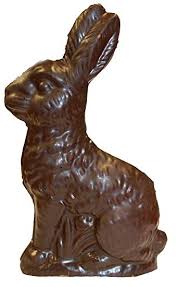
My head is spinning. I think I need chocolate.
In Memoriam: Hillary the Cat
Our good tabby-cat Hillary died this week, at the ripe old age of twenty. The house feels strangely empty. We miss his quiet, gentlemanly presence. He was a devoted friend, especially to my husband Tony. Evenings he would lie in Tony’s arms, paw stretched out to touch his chest, like a baby.
When he was younger, the two of them would sometimes take a walk together around our meadow. Hillary would bounce back, tail fluffed, excited at having ventured into this scary place so close to the forest.
The two of them also had a daily ritual. Until he was too frail to go outdoors, Hillary would walk to the mailbox with Tony every morning to collect the newspaper. I loved to stand at the window and watch. Tail aloft like a slender questionmark, he would stroll at Tony’s side to a point about halfway down the drive, where he would wait, invisible to any passing dog. On their way back to the house his pace quickened; once inside he knew he would receive a kitty treat.
From the moment he curled into the palm of my hand as a tiny kitten, I knew he was a mellow cat. Mellow he remained, right up to the end. We buried him in the orchard, where the white petals of plum blossom will fall on his grave.
